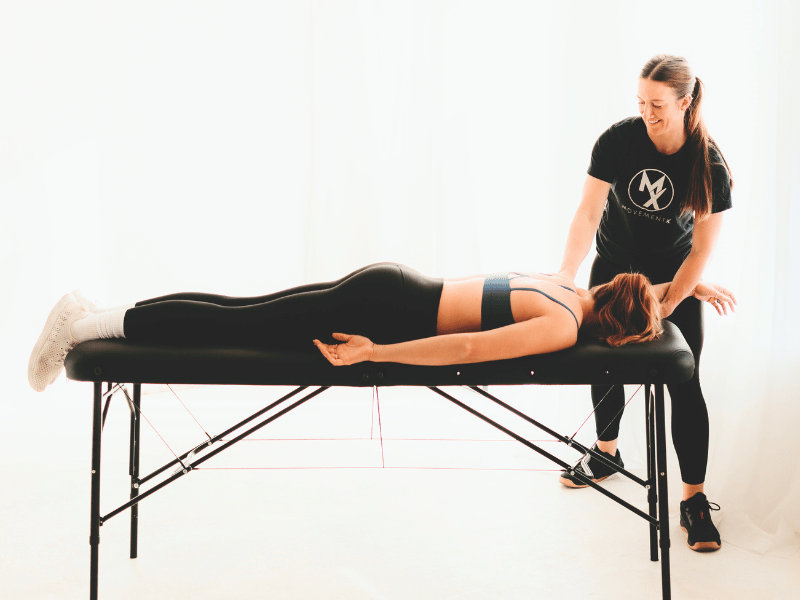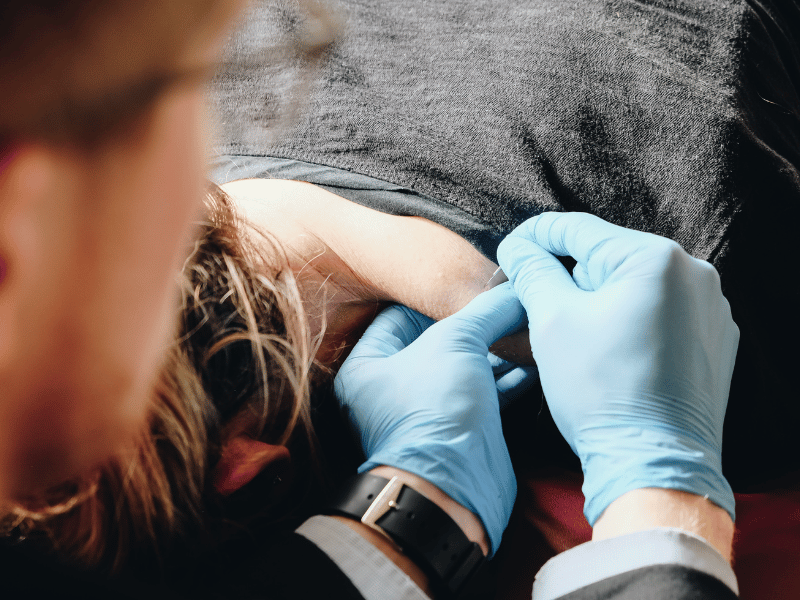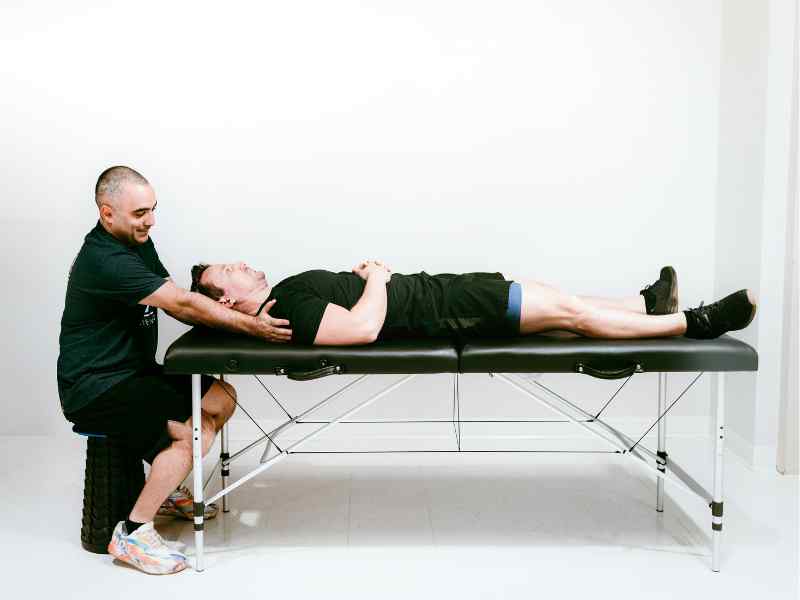Navigating Knee Pain: A Physical Therapy Guide to Relief and Recovery
Knee pain can affect everyone from weekend warriors and running athletes to busy professionals and grandparents. Its impact on daily activities can be significant, turning simple tasks like climbing stairs or taking a leisurely walk into daunting challenges. The prevalence of knee pain amidst the general population underscores not just its widespread nature, but also the urgent need for effective management strategies. According to research statistics, nearly 25% of all Americans report experiencing knee pain at some point in their lives (Bunt C.W, et al). Knee pain accounts for nearly 4 million annual visits to primary care (Bunt C.W, et al).
Common causes of knee pain are as varied as the individuals it can affect, including acute injuries like meniscus tears and chronic conditions like osteoarthritis. This diversity in causes means that there's no one-size-fits-all solution, making personalized care and informed guidance more crucial than ever. It's here, in the nuanced understanding and treatment of knee pain, that physical therapy plays a pivotal role. By offering tailored interventions and preventive strategies, our physical therapists at MovementX significantly improve quality of life for those dealing with knee discomfort.
This page is your comprehensive guide to navigating pain in the knee, from understanding its origins to exploring effective treatment options. Whether you're seeking to regain your previous level of activity or looking to manage chronic pain, the insights shared here will empower you to take informed steps towards recovery. Keep reading on to discover how physical therapy can be your ally in the journey to relief and recovery from knee pain.
What is Knee Pain?
Knee pain is more than just a symptom—it's a complex condition that can significantly influence an individual's quality of life and physical functioning. At its core, knee pain encompasses any discomfort, soreness, or ache in the knees, a joint that bears a considerable amount of our body weight and is crucial for everyday movements such as walking, running, and squatting. The knee joint is a sophisticated structure made up of bones, cartilage, ligaments, and tendons, working together to provide stability and flexibility. When any of these different structures are affected, either through injury, wear and tear, or disease, joint pain in the knee can ensue. This can lead to difficulties in performing not just athletic activities, but also routine daily tasks.
The impact of knee pain on quality of life cannot be understated. For many, it means more than just experiencing discomfort; it represents a barrier to maintaining an active lifestyle, participating in favorite hobbies, or even accomplishing simple tasks like ascending stairs or rising from a chair. The limitations knee pain imposes often extend beyond physical hindrances, affecting emotional well-being and social engagement, as persistent pain can lead to feelings of frustration, anxiety, and isolation.
Common Knee Pain Symptoms
Recognizing the symptoms associated with knee pain is crucial for early intervention and effective management. While symptoms can vary widely, there are common signs and symptoms that many people report. It's important to remember that these symptoms can sometimes be indicators of more serious conditions, potentially requiring professional evaluation and treatment.
- Swelling or Stiffness: The knee may become swollen due to inflammation or fluid accumulation. Stiffness is also common, especially in the morning or after long periods of sitting.
- Weakness or Instability: You may experience a sensation of weakness or instability in the knee, feeling as though it will give way under your weight.
- Popping or Crunching Noises: A popping or crunching sound when moving the knee can sometimes be present, potentially signaling a mechanical issue within the joint.
- Inability to Fully Straighten the Knee: This sign might indicate a mechanical obstruction or severe swelling within the joint.
- Pain: The obvious symptom, knee pain can vary from a constant ache to sharp, severe discomfort triggered by specific movements or activities. Pain can run along the joint line of the knee, around the knee cap, or sometimes radiate down the leg.
- Pain that Worsens with Activities: Activities like walking, running, climbing stairs, or kneeling can exacerbate pain.
- Night Pain: Knee discomfort that disrupts sleep or becomes more noticeable at night.
- Redness and Warmth: The skin around the knee might appear redder and feel warmer to the touch compared to other areas, possibly indicating inflammation or infection.
Understanding these symptoms is the first step towards seeking appropriate care and treatment. If you're experiencing one or more of these symptoms, especially if they're affecting your daily activities or quality of life, consulting a MovementX physical therapist can provide you with a personalized approach to alleviate your knee pain. Whether you are looking for physical therapy for knee pain in Bethesda, Maryland or elsewhere, our team is here for you.
Causes of Knee Pain
Knee pain can originate from a combination of lifestyle, genetic, and environmental factors. While certain activities or conditions can increase the likelihood of pain, it's important to note that these risk factors are frequently associated with, but not directly causal of, the presence of pain in your knee. Understanding these factors can help in identifying potential preventive measures and treatment options.
- Injuries: For some people, an injury to the knee may be the most direct cause of knee pain. This includes ligament injuries (such as ACL tears), meniscus tears (from twisting movements), and tendonitis from overuse or strain.
- Arthritis: Several types of arthritis affect the knee, but osteoarthritis and rheumatoid arthritis are among the most common. Arthritis leads to degeneration of the joint's cartilage, causing pain and stiffness.
- Overuse: If your knee is not properly conditioned, repetitive motion or overuse can strain the joint and the surrounding structures. This is often seen in athletes or people with jobs that require repetitive knee movements.
- Excess weight: This puts additional pressure on the knee joints, even during ordinary activities like walking or going up and down stairs.
- Age: The risk of developing knee problems increases with age due to wear and tear on the joint, reduced muscle strength, and a slower recovery from injury.
- Lack of Muscle Flexibility or Strength: Weak or inflexible muscles provide less support for the knee joint. Strong muscles, especially in the hips, are crucial in stabilizing and protecting the knee joint, while flexibility helps to maintain a full range of motion.
If knee pain is affecting your daily activities, consulting with a MovementX physical therapist can offer personalized advice and treatment options tailored to your specific situation.
Treatment Options for Knee Pain
Depending on its cause and severity, knee pain can be managed and treated through a variety of approaches. These treatment options aim to reduce pain, improve mobility, and restore function to your knee. It's important to consult with healthcare professionals like physical therapists to determine the most appropriate treatment plan based on individual needs and conditions. That said, here's an overview of common treatment options for pain in the knee:
- Physical Therapy: Often the first line of treatment for knee pain, physical therapy focuses on strengthening the muscles around the knee, increasing flexibility, and improving balance and coordination. PT techniques for knee pain may include exercises, stretches, manual therapy, and modalities to reduce pain and inflammation. Physical therapists also provide education on posture and movement techniques to prevent future injuries.
- Medications: Over-the-counter pain relievers, such as acetaminophen (Tylenol), ibuprofen (Advil, Motrin IB), or naproxen sodium (Aleve), can sometimes help reduce symptoms.
- Injections: In addition to corticosteroids, other types of injections such as platelet-rich plasma (PRP) and stem cell therapy are being explored for their potential to promote healing in the knee joint.
- Lifestyle Modifications: Simple changes in daily activities can significantly impact knee pain. Weight loss, for example, can reduce stress on the knee joints, and wearing supportive footwear can improve lower extremity joint alignment and reduce pain. Additionally, proper conditioning can make your leg muscles stronger and ensure your knee can withstand the mechanical forces involved with your daily activities.
- Assistive Devices: Using devices such as knee braces, taping, orthotics, or canes can provide support and alleviate pressure on the knee.
- Surgery: Surgical options may be considered for severe knee joint pain that has not responded to other treatments. Procedures can range from arthroscopic surgery to repair damaged tissue to partial or total knee replacement surgery.
Physical therapy stands out among these options for its holistic and non-invasive approach. It focuses not only on alleviating symptoms but also on addressing the underlying causes of pain to prevent future issues. Next, we'll dive deeper into how physical therapy can be particularly beneficial, exploring specific techniques and exercises that have proven effective in managing knee pain.
How Physical Therapy can help with Various Kinds of Knee Pain
Dealing with pain in your knee can be a frustrating experience, but working with a skilled physical therapist can offer a beacon of hope. A physical therapist's expertise in body mechanics and specialized training in treating musculoskeletal conditions makes them uniquely qualified to address knee pain.
Effective physical therapy for knee pain should start with a comprehensive evaluation to identify the specific causes of your discomfort. This assessment includes analyzing your gait, flexibility, muscle strength, and joint stability. Based on these findings, your physical therapist will develop a tailored treatment plan that targets your unique needs. The goal is to enhance mobility, strengthen the muscles supporting your knee, and alleviate pain—thereby improving your overall quality of life.
Treatment techniques may vary widely, but all are rooted in exercise therapy and manual therapy. Exercise therapy involves a series of targeted exercises designed to strengthen the muscles around the knee, improve flexibility, and increase range of motion. These exercises not only support the knee but also reduce the burden on it by enhancing the strength and resilience of the surrounding musculature. Manual therapy, on the other hand, includes hands-on techniques such as massage, mobilization, and manipulation to improve movement in the knee and surrounding tissues.
Physical therapists also emphasize education. At MovementX, we provide valuable insights into proper posture and body mechanics during daily activities and exercise. This knowledge empowers you to make adjustments that reduce stress on your knees, prevent re-injury, and maintain the gains made during therapy. Additionally, we may recommend lifestyle modifications, such as incorporating low-impact activities into your routine and advising on proper footwear.
By addressing both the symptoms and the root cause, physical therapy for knee pain offers a holistic approach to recovery.
Our Top Exercises & Stretches for Knee Pain
Quad Sets: This beginner's exercise is an excellent way to start strengthening the muscles around the knee without placing extra stress on your knee if it is very painful.
- Sit on the floor with your legs extended in front of you.
- Place a small, rolled-up towel under your knee.
- Push the back of your knee down into the towel while tightening the muscles on the top of your thigh. Your foot may raise up.
- Hold this contraction for 5 seconds, then relax for 5 seconds.
- Repeat 10-15 times for 2-3 sets, ensuring you're feeling the quad muscles in your thigh engage without pain.
Straight Leg Raises: This intermediate exercise continues to build strength in your quadriceps in a position that doesn't stress the knee.
- Lie down on your back, one knee bent with your foot flat on the floor and the other leg straight.
- Tighten the thigh muscle of your straight leg and slowly lift it to the height of your opposite knee.
- Keep your leg straight and your thigh muscle tight as you slowly raise and lower the leg.
- Perform 10-15 lifts, aiming for 2-3 sets. Ensure smooth, controlled movements throughout.
Spanish Squats: This advanced exercise is beneficial for strengthening the quadriceps and stabilizing the knees, utilizing a band to improve mechanics.
- Secure a strong mobilization band at knee height on a stable object in front of you and loop the other end around the back of the lower part of your knee (the top of your calf muscles).
- Step backward until there's tension in the band and position your feet shoulder-width apart. Please note that using a thin, easily stretchable band for this exercise is neither recommended nor effective.
- Keeping your back straight and chest up, slowly bend your knees and lower your body as if sitting back into a chair. The band will help your knee joint move efficiently.
- Squat down until your thighs are parallel to the floor, ensuring your knees stay aligned with your toes and don't extend past your toes.
- Push through your heels to return to the starting position, maintaining tension on the band throughout the movement.
- Perform 10-15 repetitions for 2-3 sets, focusing on controlled movements and keeping your knees in line with your feet.
Conclusion
We've discussed how physical therapy plays a pivotal role in not only alleviating knee pain but also in addressing its root causes to prevent recurrence. Through a combination of targeted exercises, stretches, and personalized care, physical therapy offers a path to improved mobility and quality of life. Remember, the recommendations from this article should merely serve as a starting point. From here, consulting with a MovementX physical therapist is essential to customize your treatment plan and address your unique needs and goals.
Knee pain doesn't have to be permanent. With the right guidance and support, overcoming pain in your knee is within your reach. Whether you're looking to return to your favorite sports, enjoy leisurely walks without discomfort, or simply move through your day pain-free, taking the first step toward physical therapy can open the door to a more active and fulfilling life.
We encourage you to reach out to a MovementX physical therapist to begin your journey to recovery. Together, we can work towards not just managing your pain, but thriving in spite of it. Your path to a pain-free life starts with MovementX.
References
- Bunt, C. W., Jonas, C. E., & Chang, J. G. (2018). Knee Pain in Adults and Adolescents: The Initial Evaluation. American Academy of Family Physicians, 98(9), 576–585. https://www.aafp.org/pubs/afp/issues/2018/1101/p576.html#abstract
Share This Page
More Conditions We Treat
Found this page interesting? Learn more about other conditions we treat:




